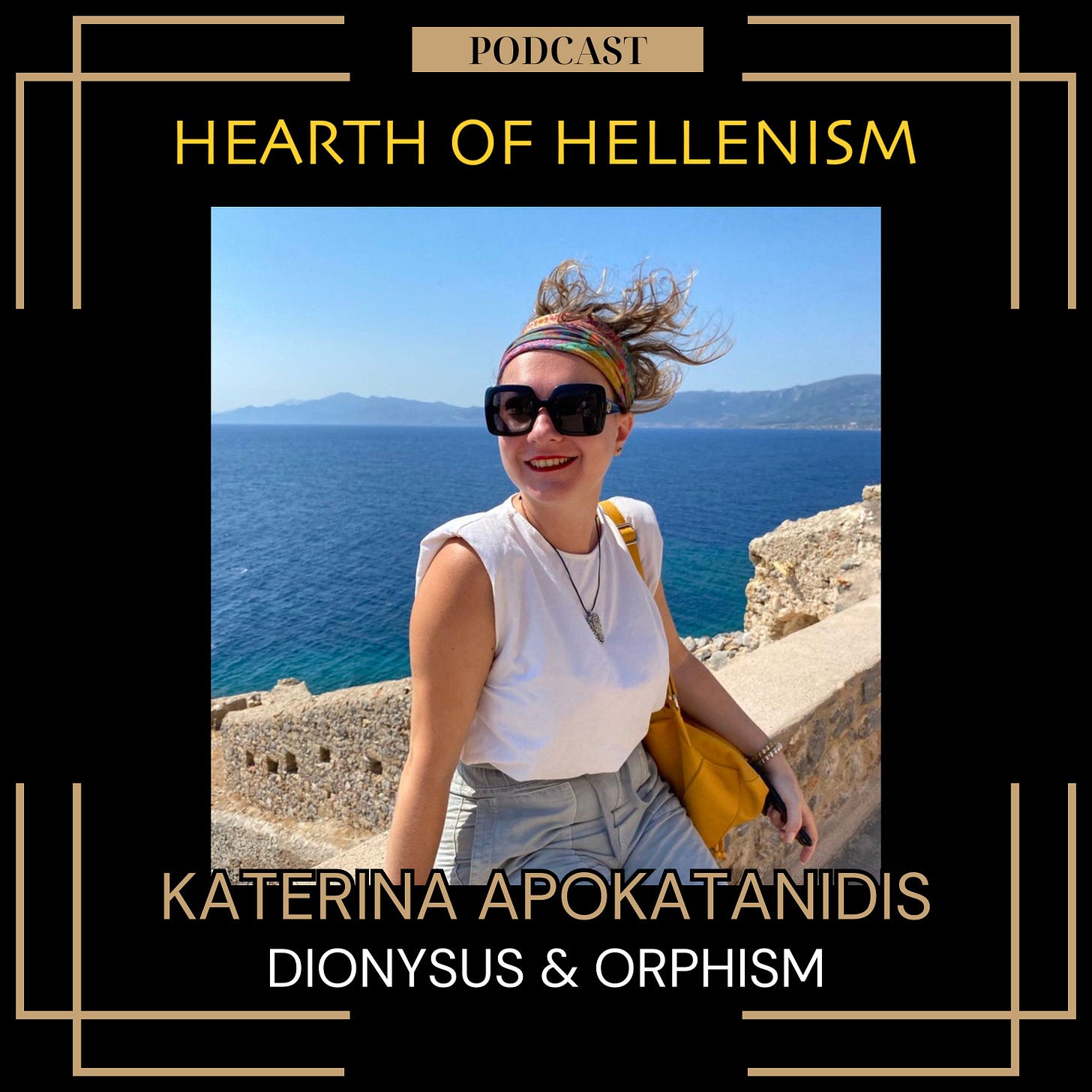In today’s interview, I speak with Katerina Apokatanidis about Dionsyus and the Orphic Gold Tablets. Katerina Apokatanidis is a PhD candidate at the University of Toronto, Department of Classics. She works with Dr. Sarah Murray on the Archaeology of Greek funerary ritual and religion between the Archaic and Roman periods. She specialises in the materiality of the Orphic Gold Tablets and their role in Greek mortuary ritual. She obtained her BA in Classical Philology at the Aristotle University of Thessaloniki, Greece. For her first MA at Durham University, U.K., she worked with Dr. J. H. Haubold on the role of women in the Hesiodic Catalogue of Women. For her second MA at the University of Waterloo, Ontario, she worked with Dr. A. Faulkner on the gender interplay in Nonnos’ Dionysiaka.
Dionysus, the Greek God of wine, revelry, and ecstasy, plays a central role in Orphism, a religious movement in ancient Greece. Orphism was centered on the teachings of the legendary poet Orpheus, who was said to have traveled to the underworld and returned with secret knowledge. In the Orphic tradition, Dionysus is seen not just as a God of wine, but as a symbol of life, death, and rebirth. Orphics thought that by following special rituals and living a pure life, they could break free from the cycle of rebirth and achieve a blessed afterlife.
The Orphic Gold Tablets are small pieces of gold with inscriptions that were found in ancient graves. These tablets were placed with the dead and contained instructions for the soul’s journey in the afterlife. The messages on the tablets guided the deceased on what to say and do when they reached Hades, helping them navigate their way in the underworld.












Share this post